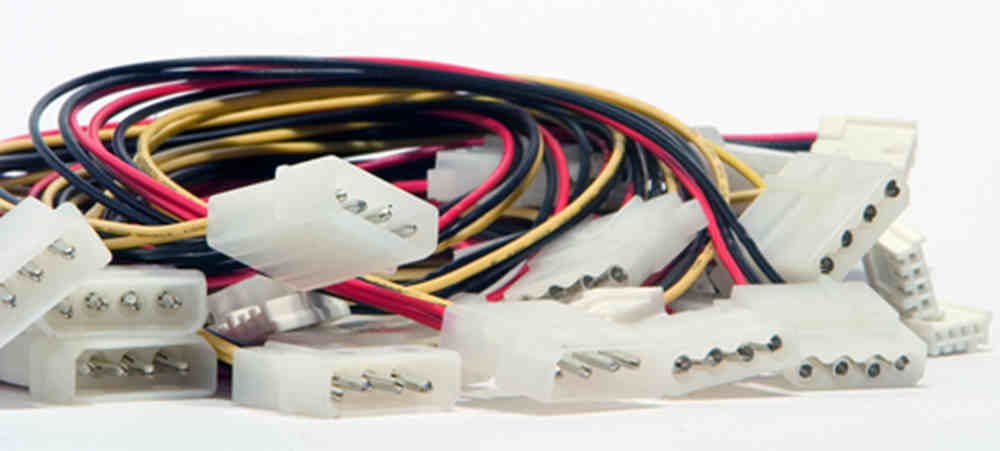
Wiring is a crucial part of the electrical system. The wiring system can make or break your electrical system. Faulty wiring reportedly makes up for 69% of electrical fires in the US, according to the National Fire Protection Association (NFPA).
So, how can you pick the right wiring system to fit your needs? Here are some general tips, which we will each dive into further:
- Choose the Right Location and Space
- Get a Thorough Design
- Match the Electrical Requirements
- Think of Resistance and Durability
- Color and Label Your Wires
- Budget Considerations
If you want to learn more about picking a wiring system, read on! This article dives deep into the above five tips that will help you decide on the best way to wire your home or business, based on what you need, how much you need it, and what kind of budget you have available.
#1 Choose the Right Location and Space
One of the first things you should consider when picking a wiring system is where you will be putting it. Will it be in a ceiling, wall, or floor space? The type of space you pick will determine what kind of wiring system you should use.
If you need to install the wiring in an existing wall or ceiling space, you can choose a wire-harnessing method that uses a wire raceway. Wire raceways are designed to fit inside walls and ceilings.
If your new wiring system is installed outside of an existing wall or ceiling space, you can use an electrical outlet box instead. An electrical outlet box consists of one giant box with several electrical outlets inside.
Additionally, you should always install your wiring system within a safe distance from anything that could damage it, such as wind or water damage.
You should also consider whether there are any obstructions (like trees) nearby where falling branches could knock down cables and create hazards for everyone who lives in the area.
This is especially important if your wiring system is outdoors, exposing it to many possible dangers from the environment.
#2 Get a Thorough Design
Once you have chosen the right location and space for your wiring system, you should get a detailed design from an electrical contractor.
A thorough design will include drawings of all of the locations where your wiring will be installed, as well as detailed plans on how to wire everything together. This is important because if you do not follow the proper installation instructions, it could cause damage to your home or business.
For example, many people try to wire their homes with the same type of wire they use in their garage. This is a mistake because garage wires are made differently than house wires, so they may not be able to connect properly with each other.
In addition, if you are using a different kind of cable than what was used in the walls or ceilings where your existing wiring system is located, you may run into problems with overheating and melting at high temperatures.
If you are planning on installing your new wiring system outdoors, then it is also essential that the plans include measurements for things like:
- Distance between outlets
- Size of outlets
- Amount of insulation needed for outlets
- Types of power sources (e.g., battery backup)
- Clearances between the new outlet box and the existing wiring
- Clearances between the new outlet box and other objects (e.g., trees, power lines)
#3 Match the Electrical Requirements
The electrical requirements of your home or business will also affect how you pick a wiring system. When you operate the wiring system, electric currents travel through the circuits.
A higher circuit amperage would need bigger wires to handle its electrical load. If your wire size doesn’t match your electrical requirements, it may overheat and cause fires or other hazards.
So, what does this mean for you? It means that if you want to use larger appliances or support more heavy loads, then you’ll need a bigger circuit breaker or wiring system.
Conversely, if you only want to run small appliances or save money by using smaller wires, it may be better for you to pick a more miniature circuit breaker or wiring system.
For example, if you have a lot of high-powered electronics, such as high-end TVs and gaming systems, you may need to use thicker wires to handle the extra power.
If you have more low-powered electronics, such as lamps and small appliances, you might need thinner wires to avoid overloading your system. You may also need to use special grounding wires that can help reduce the risk of fire caused by electricity.
There are many ways to gauge the appropriate wiring system size that would match your voltage needs, such as using the American Wire Gauge (AWG) formula. You can conduct research yourself or work out a plan with your mechanic to determine what’s best for your electrical requirements.
#4 Think of Resistance and Durability
Another vital factor to consider when picking a wiring system is the durability of your wires. Some systems are more durable than others, which could affect how long you will need to keep them up and running.
For example, some systems use flexible wires that bend and move around more easily than others. This means that they might be more prone to damage if pulled on or bumped into while in use.
You could also add coverings or sheathing to your wires to give them that extra layer of protection. These include expendable braid sleeves, heat shrinks, and spiral wraps, though many other options.
These sheath options come in various costs and installation types, so you can be sure to find one that fits your needs. There are also many tutorials on how exactly you can apply each method of covering, so with some care and practice. You can even do this yourself!
#5 Color and Label Your Wires
Another critical factor to consider when picking a wiring system is the color and labeling of your wires. Many systems use color codes to differentiate between different types of cables.
This can help you quickly identify where each type of wire is located in your home or business. If an electrician maintains your wiring system, having colors and labels on your wires will also help make their jobs easier.
You should note that there are usually standardized ways of coloring electrical wires. This guideline may vary from region to region, with some following international regulations while others refer to their local laws. So, if you’d like to incorporate coloring into your wiring system, make sure to do research that is relevant to your location.
Other than coloring your wires, you could also make your wire marking more thorough by incorporating actual labels. This is helpful if your system has higher voltage levels or is particularly complex.
You can use flag labels, wire wraps, or shrink tubes to achieve this. Additionally, make sure the information is clear and legible; you can have them printed if you want to go the extra mile.
#6 Budget Considerations
The last thing you need to think about when picking a wiring system is your budget. The right budget can make all the difference in the world when it comes time for repairs or replacements down the road.
You may want to spend as little money as possible on your wiring system, but this is not always the best idea. It’s better to pay a bit more money up front than try to fix things later.
For example, some systems are more expensive than others because they are made from higher-quality materials or have additional features that make them more useful. They might be worth paying extra for if you want them to last longer than other systems.
Other than the quality of the materials, your costs may also differ depending on the size and location of the premises you’re hooking up with a new wiring system. You may also have to pay for permits and inspections under certain conditions.
While you may be tempted to buy a kit and DIY it out, you should consider hiring a licensed professional electrician. This will make sure that your job is done safely and efficiently. Moreover, you can consult your electrician. There is also the addition of labor costs.
A good electrician will give you sound advice on picking and installing the correct wiring for your needs. They will also help you with any aftermath-related necessities, such as site cleanup.
suitable
If you want to get the best bang for your buck, there are many tricks to cut back on costs without sacrificing quality. This includes choosing the right materials for your wiring system and having the design prioritize ease of manufacturability.
In general, you want to make sure you reach a happy medium between having the system be of high quality and making sure it is affordable and accessible.
Final Thoughts
The wiring system you choose can be an excellent investment. If you don’t take the time to consider your options, you might end up with a wiring system that isn’t as useful as it could be. By following our tips, you can find the correct wiring system for your needs.

